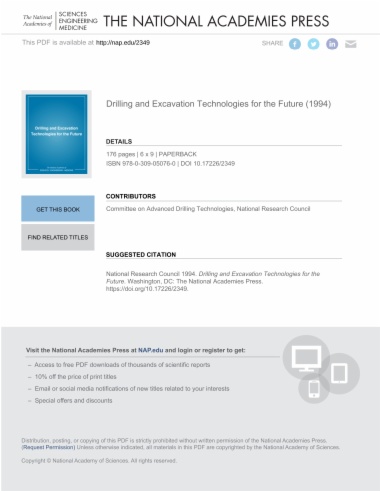

Drilling is a critical component in many segments of U.S. industry such as resource recovery (e.g., oil, gas, mining), civil infrastructure systems (e.g., sewers, highway tunnels, subways), environmental remediation, and for scientific purposes. Research undertaken for new and improved drilling systems and processes can have an enormous impact on U.S. productivity. This book provides an examination of the technical and scientific feasibility of substantial advances in drilling and related technologies. Concepts for new mechanical and non-mechanical drilling applications—including advances in knowledge of the tool-rock interaction—are reviewed, research opportunities are identified, and recommendations are made on the scope and direction needed to realize these opportunities for improved methods of drilling.